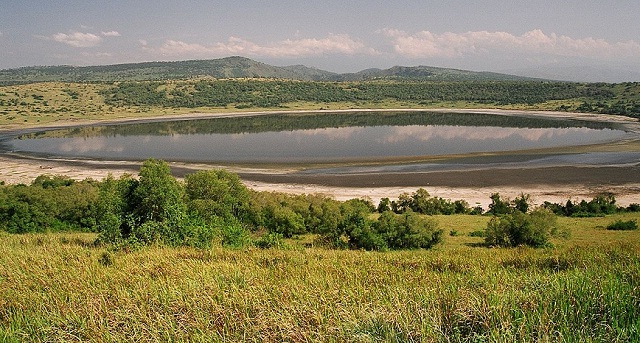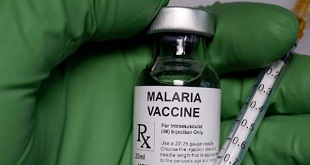
The lion massacre
Almost a year ago, Kisembo and Turyamuha were reduced to tears when they discovered the remains of 11 dead lions near Hamukungu fishing village on the northern frontier of Queen Elizabeth National Park. The death of the lions alarmed many conservationists, both local and international.
From the small signpost marked with big black letters reading, “Community No Access,” Turyamuha says we are about 1km from last year’s harrowing incident.
We are surprised we found these lions within range of the death spot but the youthful ranger tells us that the lions cannot tell where the park boundary stops. Turyamuha has never come to terms with the loss of the pride of 11 lions.
“We never imagined this situation because we used to involve the communities in the protection of these lions,” Turyamuha says, “We have community scouts who are trained to handle problem animals once they stray in the communities, we get reports and we take the necessary responses; but that day, nothing of this sort happened.”
The park has since improved its surveillance to protect the lions which the International Union for Conservation of Nature (IUCN) describes as vulnerable.
A study published in the journal, “Proceedings of the National Academy of Sciences,” in 2015 noted how Africa’s lion population is fast declining with present statistics putting the number across Africa at 20,000.
The Oxford University scientists said there is a 67% likelihood that the number of lions in Central and West Africa would drop by half within two decades. In East Africa, for lions in Serengeti National Park, the probability is 37%. In Queen Elizabeth National Park, the park managers say the number hovers around 120.
At 1978 sq km, Queen Elizabeth National Park is one of the biggest parks in Uganda. It has three main water bodies; Lake George, Lake Edward and the Kazinga Channel which links the two lakes.
These water bodies have six landing sites between them, including; Hamukungu, Kahendero, Katunguru and Kasenyi, on Lake George and Katwe-Kabatoro and Kayanja are on the Ugandan side of Lake Edward which straddles the DR Congo.
Close to 20,000 people are said to depend on the fishing activity from Lake George and the Kazinga Channel and another estimated 15,000 depend on the Ugandan side of Lake Edward.
Edward Asalu, Queen Elizabeth National Park’s Chief Warden told The Independent that the conservation area under his watch is gazetted by UNESCO as a man and biosphere reserve, meaning that human activity is permitted to go on alongside conservation.
But this special status has also led to one of the most disturbing relationships between the beasts and man. And in recent years, it is the cats that have come off worse.
Asalu says that in the beginning, the fishing villages were gazetted for purposes of fishing. But back then, as in many other parts of Uganda, the human population was quite small. Not anymore. People have increased in number and they have overfished the water bodies.
“After depleting the lakes, the communities had to look for alternative sources of livelihood and so they started rearing goats and cattle and this is the source of the conflict,” Asalu told The Independent.
“The lions have since learnt that it is much easier to get a cow or goat than the wild animals like Kobs which are adapted to the jungle.”
Saving them is critical and that is why the park’s management has since come up with several initiatives that are all geared at lessening the interaction between the communities and the lions to keep the big cats safe.
Collared lions
The park’s veterinary department which monitors animal health has been working with the rangers and the Uganda Carnivore Programme officials led by Dr. Ludwig Siefert to select individuals for collaring.
Although the radio collar programme in the park has been an ongoing initiative since the late 1990s, the Wildlife Conservation Society, the Uganda Wildlife Authority and the Uganda Carnivore Programme has recently embarked on collaring more lions to improve their monitoring.
“We normally pick the dominant female because wherever the dominant female is, it is followed by many other females,” Turyamuha says, “Having the dominant female collared gives us a chance of finding out where others are and it is easier to follow their health status, movement patterns in our quest to preserve their status in the park.”
Alongside this initiative is a team of rangers stationed within the communities which is always ready to respond to whatever happens when they notice lion movements.
“These lions have satellite callers which are monitored through the satellite system,” he adds.
“A map has to be downloaded every day to help us find how closer to the community, the lions are. When we realise that they are closer, especially, pastoral villages, we alert the rangers and scouts who also alert the communities to move their animals away from the lions’ range or park boundaries.”
“That means that the cows that would have died that particular day get saved and when the people see us monitoring across the park boundaries, between their land and protected area land, they know we are in control.”
This appears to be a marked improvement from a year ago when the Hamukungu community told Prof. Ephraim Kamuntu, the Minister of Tourism, Wildlife and Antiquities in a hastily arranged meeting that they lived in constant fear of the lions yet the UWA rangers are hardly present in the communities. Whether the presence of rangers in the communities will boost confidence remains to be seen.
As our guide on motorbike gave our driver the signal for us to leave the park because we are not allowed beyond 7pm, I stole a final look at the collared lion that was now awake but still in a sleeping position.
I wonder if collaring lions does not take away the “wilderness experience” when a first time visitor like me encounters a lion.
Turyamuha agrees. But, he says, those are some of the choices that conservationists have to weigh on a daily basis.
“What is better between an animal getting killed and it getting inconvenienced with a collar to ensure it at least survives for the next 15 years?”
He adds: “We don’t just collar any individual. We don’t collar pregnant or lactating individuals or even those that are younger than two-and-half-years.”
He says, in any case, collaring the lions in the park is an expensive venture. Just one radio collar goes for perhaps US$ 3,000, not to mention the expenses in constant monitoring. Turyamuha says there are currently 13 lions collared in the northern part of the park. He says it is worth the effort.
“There are other natural forces threatening the survival of these lions; like climate change but, if these rare animals are to survive, we must be active and closely monitor them.”
****
 The Independent Uganda: You get the Truth we Pay the Price
The Independent Uganda: You get the Truth we Pay the Price


